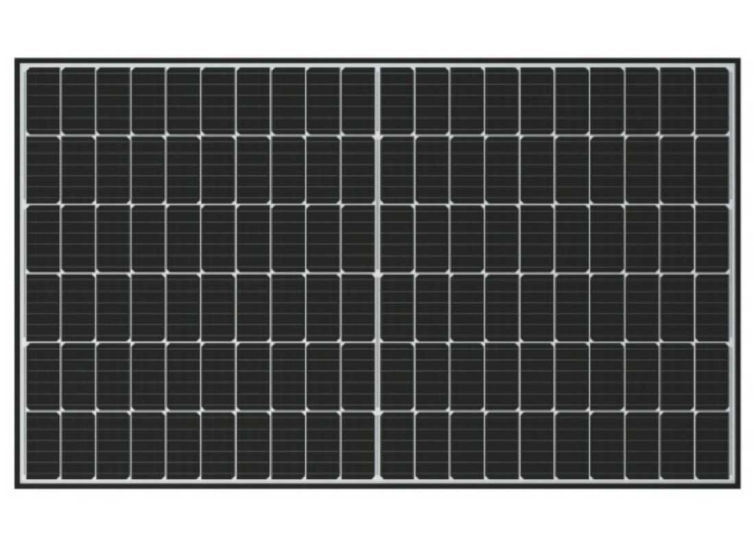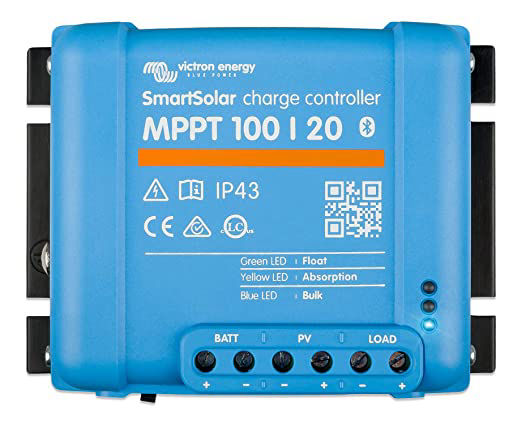

When it comes to cruising on a sailboat, power is your most needed commodity. From power comes water (watermakers), fuel (electric propulsion), air conditioning, heating, lights, hot water, cooking, cleaning, etc. You can never have enough power.
With that said, the best way to get power is from solar panels. The issue is, there is limited space in which to put solar panels on our boat and we don't want them to go beyond the stern sugar scoops or they add to the length of the boat. If that happens, we will be charged extra in marinas and canals, etc. Therefore, we want the most efficient solar panels that fit and and work in an environment that is often shaded due to masts, booms, and various lines.
Flexible Panels
We really want to go with these as they are much lighter than hard panels. Unfortunately, they come with a major draw back... cost. First of all, they cost around 50 to 100% more than hard panels. However, it is not the initial cost that is the issue, it is how long flexible panels last. We have reports of flexible panels wearing out after just 14 months, and even if they do last longer, that typically don't go more than four years. Also, during those years, they tend to lose efficiency, generating less power as they degrade from heat.
Speaking of heat; this type of panel is typically mounted by gluing it to the cabin roof top, which allows for no cooling. Yet, even if they are mounted with a gap underneath, the thinness of the panels is not good at dissipating heat and that make the cells get hot which degrades the panel. And, putting a gap underneath is difficult as they are flexible so they would need a lot of support. In the end, the cost and issues rule these out.
So, for now, we plan to go with hard panels unless some advancement arrives that demonstrates how these new flexible panels last at least ten years without significantly degrading.

Shading on solar panels
It is inevitable that panels will be shaded on a sail boat. There are just too many things high in the air. Masts, shrouds, antennas, spreaders, lines, and booms, Therefore, our goal with solar panels is to have the least amount loss possible when a panel becomes shaded. There are three methods of mitigating this problem, the first is diodes, the second is Half Cut cells, and the third are MPPT solar controllers.

Diodes on Solar Panels
A diode is a very simple, though important, element on a solar panel. It is a piece of electronics that only allows power to move in one direction through the diode. These can be used to skip over a single solar cell that is shaded, allowing the other cells to keep on working.
Unfortunately, as of now, there is only one solar panel manufacturer we know of that offers panels with a diode per solar cell, Sunpower. The issue with Sunpower is twofold, they are very expensive and if you put them on a sailboat it voids the warranty. So, you are paying a king's ransom so that you have the best panels with a long warranty, and that warranty would be voided on our boat.
There is a lesser diode setup that is still helpful. Panels with these use three or six diodes to divide the panel into sub groupings of cells. When one group is shaded, the other strings still function at full efficiency.

Half-cut cells with diode strings
In panels with Diode strings, they are placed at the end of every two rows, making a loop that can be skipped if part of it is shaded, the other two sets of looped rows still send full power. Half-cut cells do exactly what they say, they cut each square solar cell in half. Then, the panel is divided into two separate panels (see the thicker line down the middle, (pic right). Each loop of two line has a diode, but instead of just three loops, due to the half-cut sells, there are now six shorter loops (see purple arrows). This gives you a much better chance of not losing the entire panel due to shading, though not as good as a diode per cell. However, these come at a fifth the price of Sunpower and they keep their warranties even on a boat. That is why we are going with these types of panels.

Maxeon Cells from Sunpower
SunPower panels feature a unique cell architecture that keeps the cell temperature much lower. When the current in a SunPower panel encounters shade, it meets less resistance due to the cell’s design and properties. When the current meets less resistance, less heat is generated, and your panel runs at a lower temperature. This design ensures your panels are protected and will function properly for the long term. Every time there is shade, this minimizes section shutdowns that limit your power. Under an identical shading scenario, a SunPower Maxeon 5 panel generated nearly 3x more power. This is due to the combination of two advantages: a higher-powered panel and superior performance in shade.

MPPT solar controller.
Solar charge controllers are a necessity for getting the most out of your solar panels. They can take higher voltage and reduce it down to what your batteries need as well as cut off the power when the batteries are full.
However, when it comes to shading, MPPTs have another advantage. Even with Diodes, there are losses caused by shading. By isolating panels to their own MPPT, some of these losses are reduced because when a set of panels are shaded, it has no effect on the other panel sets because they are on their own MPPT.
Of course, adding more MPPTs costs more, since one MPPT can handle many solar panels, but this is the most efficient method of getting all the power you can from your panels.
Because our SunPower E20 435watt panels have an open circuit voltage of 85.6 volts, that's enough voltage, without combining panels to use one MPPT per panel. We are planning to go with 11 Victron Energy 100/20 (48V-20A) MPPT Charge Controllers hooked up through a USB Hub using VE Direct to USB adapters.

Now that we know we want Maxeon or half-cut cells, both with diode protected and each panel hooked to its own MPPT charge controller, we have to decide on which panels to purchase. Below are a list of our top contenders for solar panels.
SunPower E20 Panels - 435w, 85.6v
128 Maxion cells with 3 bypass diodes
Monocrystalline
22.5% efficiency
IP 65 rating
L 81.36", W 41.18", H 2.13"
Weight 56 lbs.
The SunPower Maxeon solar cell is the only cell
built on a solid metal foundation. Virtually
impervious to the corrosion and cracking

Bluesun 460w, 50v
PERC, Half Cell, Bifacial, Double-glass
Monocrystalline
21.16 efficiency
3 diodes
half cut cells
IP65 waterproof
L 82.44", W 40.87", H 1.18" (2094*1038*30MM)
Weight: ? lbs.
Warranty 25 years

Canadian Solar 440w, 48.7v
Half-cut 144 cells
Polycrystalline
This voltage works perfectly for our MPPTs with two panels in series (97.4v, or max is 100v)
20%
3 diodes
half cut cells
IP68 waterproof
L78.74", W 39.96", H 1.38"
Weight 49.6 lbs.
Warranty:
15 years materials/workmanship
25 years Linear Power output loss of 0.6% / year.

Canadian Solar, BiHiKu CS3W-450MB-AG
450Watt 144 1/2 Cells Bifacial Clear Monocrystalline
Half-cut 144 cells
Monocrystalline Silver Frame Solar Panels
20.2%
49.1v
3 diodes
144 half cut cells
IP68
83.9 x 41.3 x 1.2 in
Weight: 62.6 lbs.
Warranty 12 years materials and workmanship, 30 years linear Power Performance
Bifacial Gain
5% 473 W 41.1 V 11.51 A 49.1 V 12.18 A 21.2%
10% 495 W 41.1 V 12.06 A 49.1 V 12.76 A 22.2%
20% 540 W 41.1 V 13.15 A 49.1 V 13.92 A 24.2%
30% 585 W 41.1 V 14.25 A 49.1 V 15.08 A 26.2%

We have had reports from boats of their walk on panels not lasting well so, most likely, we will go with hard panels. We really like the Sunpower E Series due to the partially shaded benefits of the Maxion cells. However, Sunpower voids their warranty if panels are installed on a boat! And, at around $13,000 for new panels, that's a big risk! There is another option though, we have located some used Sunpower E20/435 watt panels. These only run $199, so they are not much of a risk. This way, we get the benefits of Sunpower Maxeon Cells without breaking the bank.
The issue with all the panels from Chinese companies is shipping. Ordering the panels from China is not much of a savings as the current shipping costs drive the price of the panels up to approximately the same cost as buying new panels from local distributors, somewhere around $360 per panel).
Right now, we are leaning toward the used Sunpower E20 435 watt panels as they are local pickup and we get them cheap at $199. At that price, which will be about $2,000 less than any of the other options, we can replace them in a few years if something better shows up. These will fit our solar arch without extending past the end of the extended Solitaire 1500 sugar scoops. That makes them perfect for our needs.
Our thought is to spend as little as possible initially, and replace the panels in five to ten years with new and better solar panel technology as it comes available.
Why do we need so much solar?
The amount of solar panels also dictates the size of the battery bank. On the Solitaire 1520 we draw between 15% discharge and 95% charge of our 33 kw battery. That means we have an 80% usage rate, or about 26,400 watts available to power the boat. We want to roughly match the usable size of the battery bank to the maximum power we can recharge in a single day from solar.
If we go with eleven 435 watt Sunpower solar panels we get a total of 4,785 watts. The rule of thumb is you recharge 5 hours worth of your solar capacity on an average sunny day, so that means we could expect to recharge about 23,925 watts on a perfect sunny day.
If we match that to the 26,400 watts of our usable discharge of our battery bank, you can see that we are somewhat close to the same daily charge as discharge. Therefore, on paper, our solar panels should just about recharge our 33 kw battery on a typical sunny day.
Now, realistically, there won't be any perfectly sunny days with no shading on any panel. On the other hand, we won't typically discharge the entire usable battery either. It should all even out and be close enough to work out fine.
Here is the layout for our solar panels on S/V Lynx

Solitaire 1520
You can see why we did not try to add any roof top seating areas. We need the space for solar panels. We did manage to keep a walking path along the boom, an open area around the base of the mast, and a clear space for our self-taking jib track and car.
AI Website Generator